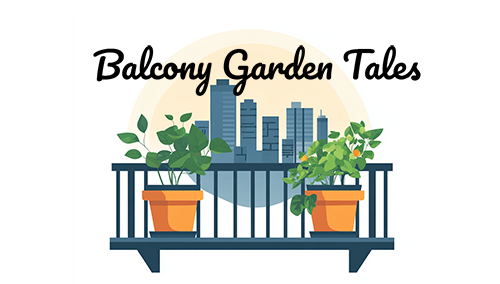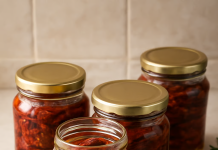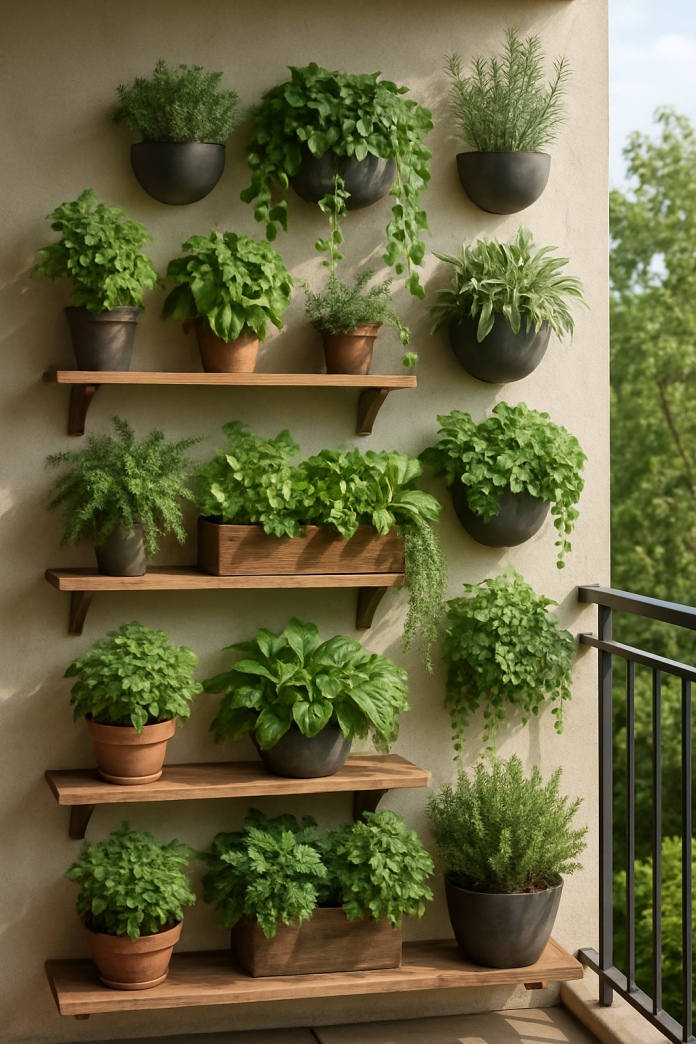I’ve spent the last eight years mastering balcony gardening tips through trial and error—often learning from a few too many dead plants and some really cringe-worthy mistakes. Trust me, when I first began, I felt like a serial plant killer! These essential balcony gardening tips I’m sharing come from real experience, covering everything I wish I’d known before getting started—from the right soil to choosing hearty plants like pothos and herbs that can thrive in small spaces. Let’s tackle this together with proven balcony gardening tips, so you can enjoy your little green sanctuary without the same struggle I faced. Think of it as sitting down with a friend who’s finally cracked the code (after a lot of trial and error) to creating a thriving balcony garden using these hard-won tips.
Watering Techniques for Balcony Gardens

Watering might seem simple, but trust me, it’s a whole art form—one of the most crucial balcony gardening tips I’ve learned! I discovered this the hard way after drowning my first batch of plants. Picture this: I was so excited to start my balcony garden that I overwatered my poor geraniums. They turned yellow and droopy, and I felt like the worst plant parent ever.
Here’s the thing: finding the right balance is key among all balcony gardening tips. You want to keep your plants hydrated without turning their pots into swimming pools. I found that using a watering can, like the one in the image, gives you better control. It’s all about that gentle pour, letting the water soak in slowly.
Another essential tip for successful balcony gardening? Check the soil! Stick your finger in about an inch deep. If it feels dry, it’s time to water. If it’s still moist, hold off for a day or two. I can’t tell you how many times I’ve watered when I didn’t need to, only to find my plants looking sad.
And don’t forget about timing—one of my favorite balcony gardening tips! Early morning or late afternoon is best. Watering during the heat of the day can lead to evaporation, and your plants won’t get the hydration they need. I learned this after watching my basil wilt in the afternoon sun. Now, I make it a routine to check my plants in the morning with my coffee.
Soil and Fertilizer Tips for Healthy Plants

Here’s the thing: when I first started balcony gardening, I thought soil was just dirt. I couldn’t have been more wrong! The image captures a moment that many of us can relate to—getting our hands dirty while mixing soil and fertilizer. Trust me on this, the right soil can make all the difference.
In my 8 years of balcony gardening, I’ve learned that not all soil is created equal. You want a mix that drains well but also retains moisture. A good potting mix is your best friend. I remember using regular garden soil once and ended up with a pot full of mud. My poor plants didn’t stand a chance!
Now, let’s talk about fertilizers. I’ll be honest, I used to think they were optional. After killing 20+ plants due to nutrient deficiency, I realized that feeding your plants is key. Organic fertilizers, like compost or worm castings, are great options. They’re gentle and improve soil health over time. Just sprinkle some in and mix it in like you see in the image.
Don’t forget to check the specific needs of your plants. For instance, tomatoes love a little extra calcium, while leafy greens thrive on nitrogen. It can feel overwhelming, but once you get the hang of it, it’s super rewarding. I still remember the pride I felt when my first batch of herbs thrived!
So, if you’re starting out, don’t stress too much. Experiment, learn from your mistakes, and celebrate those small wins. Every plant is a new opportunity to grow, just like your gardening skills!
Pest Management Strategies for Urban Gardens

When I first started balcony gardening, I had no idea how much of a challenge pests could be. I remember my first summer in Chicago, I was so proud of my little plants, only to find them covered in aphids one morning. Here’s the thing: pests are part of the gardening game, especially in urban areas where space is tight and plants are close together.
One effective strategy I learned is companion planting. For instance, marigolds are not just pretty; they can help deter pests like nematodes and aphids. I planted them alongside my tomatoes, and I swear it made a difference! I’ll be honest, it took me a few tries to get the right combinations, but it was worth it.
Another trick is to use natural repellents. I’ve mixed up a simple spray using water, a few drops of dish soap, and some crushed garlic. It sounds a bit odd, but trust me on this—it works! Just spray it on the affected areas, and it’ll help keep those pesky bugs at bay.
Regularly checking your plants is crucial. I can’t tell you how many times I’ve let things slide, only to find a full-blown infestation. Set aside a few minutes each week to inspect your plants. If you catch issues early, you can often resolve them without too much fuss.
Lastly, don’t hesitate to reach out to local gardening groups or experts. They can offer advice tailored to your specific climate and plant types. Remember, this worked for me, but every space is different. Celebrate those small wins, and don’t get discouraged by setbacks. Happy gardening!
Choosing the Right Containers for Your Plants

When I first started balcony gardening, I had no clue about containers. I grabbed whatever I could find, thinking they’d do the job. Spoiler alert: they didn’t. Here’s the thing: the right container can make a world of difference in how your plants thrive.
Take a look at this vibrant setup. You see a mix of colors and sizes, right? That’s key! Different plants have different needs. For instance, those tomatoes on the left need a deeper pot to support their roots, while the herbs can thrive in smaller, shallower containers. Trust me on this; I learned the hard way after losing a few plants to poor drainage.
Speaking of drainage, always check if your pots have holes at the bottom. I once used a cute pot without drainage, and let’s just say my basil didn’t survive the soggy conditions. Now, I always make sure to use pots that allow excess water to escape.
Also, consider the material. Terracotta pots are great for breathability but can dry out quickly. Plastic pots, like the colorful ones here, retain moisture better. I’ve switched to a mix of both, and it’s worked wonders for my plants.
Lastly, don’t forget to have fun with it! Choose containers that reflect your style. It’s your balcony, after all! I’ve got a few quirky pots that always get compliments from friends. So, go ahead and pick what makes you happy while keeping your plants healthy!
Seasonal Care Tips for Year-Round Gardening

When I first started balcony gardening, I had no idea how much the seasons would impact my plants. I remember my first summer, filled with excitement and a few too many trips to the local nursery. I thought I could grow anything, but reality hit hard when I lost a few plants to the heat. Here’s the thing: understanding seasonal changes is key to keeping your balcony garden thriving.
Take a look at the image above. It beautifully captures the transformation of a balcony garden throughout the seasons. In spring, vibrant flowers bloom, and lush greenery fills the space. By summer, those plants are in full swing, offering a burst of color and life. But come fall, the scene shifts to warm oranges and yellows, reminding us that change is natural.
I’ll be honest, my first autumn was a bit of a mess. I didn’t know how to prepare my plants for the cooler weather. I lost a few favorites, but I learned to embrace the seasonal shifts. Now, I make sure to transition my plants properly. For instance, I prune back my herbs and bring in any tender plants before the frost hits.
Winter can feel daunting, especially when everything looks bare. Trust me on this: it’s a great time to focus on hardy plants. Evergreens and winter blooms can add life to your balcony, even in the cold. I’ve found that adding a few pots of pansies or ornamental kale can brighten up those dreary winter days.
As spring rolls back around, I get excited about replanting and refreshing my pots. I’ve learned to rotate my plants and try new varieties each year. It keeps things interesting and helps me avoid the mistakes of the past. Remember, every season brings its own challenges and joys. Celebrate the small wins, like seeing your first flowers bloom or successfully keeping a plant alive through winter.
Selecting the Best Plants for Limited Space

When I first started balcony gardening, I was overwhelmed by the choices. I remember standing in the garden center, staring at rows of plants, feeling like a kid in a candy store. Here’s the thing: not every plant is a good fit for a small space. You want to pick plants that thrive in pots and don’t take over your entire balcony.
In my eight years of balcony gardening, I’ve learned that herbs and compact vegetables are fantastic options. Take basil, for example. It’s not just easy to grow, but it also adds flavor to your meals. Plus, it doesn’t need a ton of space. I’ll be honest, I’ve killed my fair share of plants, but basil has always bounced back for me.
Then there’s the tomato plant. I remember my first summer in Chicago, I planted a tiny tomato seedling. Watching it grow was so exciting! Just make sure you choose a variety that stays small, like a cherry tomato. Trust me on this: you don’t want a giant plant taking over your limited space.
Strawberries are another winner. They’re not only delicious but also look great in pots. I still get a thrill every time I spot a ripe berry. It’s like a little treasure hunt! Just keep an eye on them, as they can be prone to pests.
And let’s not forget about herbs like rosemary and mint. They’re hardy and can handle a bit of neglect. I’ve had my share of plant fails, but these guys have always been forgiving. Just remember to give them enough sunlight and water.
Every balcony is different, so what works for me might not work for you. It’s all about trial and error. Don’t be afraid to experiment and find what fits your space and style. Celebrate those small wins, like when your first flower blooms or you finally get that perfect tomato. Gardening should be fun, not stressful!
Understanding Sunlight Exposure for Optimal Growth

When I first started balcony gardening, I had no clue how much sunlight my plants actually needed. I remember buying a beautiful Fiddle Leaf Fig, thinking it would thrive in the little sunlight I got. Spoiler alert: it didn’t. Here’s the thing: understanding sunlight exposure is key to keeping your plants happy and healthy.
In the image, you can see a lovely balcony setup with a variety of plants soaking up the sun. Each plant has its own light requirements. The Fiddle Leaf Fig, for instance, loves bright, indirect light, while the Geraniums in full bloom thrive in direct sunlight. Trust me on this—knowing where to place your plants can make all the difference.
During my first summer in Chicago, I learned the hard way that not all spots on my balcony get the same amount of light. I had a few plants that I thought would do great in a shaded corner. They ended up looking sad and droopy. Now, I check the sunlight patterns throughout the day before deciding where to place new plants.
Here’s a tip: observe your balcony at different times. You might find that certain areas get more sun in the morning than in the afternoon. This can help you figure out which plants will thrive where. And don’t be afraid to move things around! I’ve rearranged my plants more times than I can count, and it’s always worth it when I see them perk up.
Remember, every space is different. What worked for me might not work for you. If you’re unsure, local gardening groups or even a quick chat with a neighbor can provide valuable insights. Celebrate those little wins—like when your plants start to grow new leaves. It’s all part of the fun!
Creating a Vertical Garden for Space Efficiency

Here’s the thing: when I first started balcony gardening, I had no idea how to make the most of my limited space. I remember cramming pots everywhere and feeling overwhelmed. Then I discovered vertical gardening, and it changed everything!
Take a look at the image above. It shows a beautiful vertical garden filled with lush greenery. The plants are arranged in a way that maximizes space while creating a stunning visual effect. I wish I had known about this sooner! Hanging pots and wall-mounted shelves can turn any bare wall into a thriving garden.
Trust me on this: using vertical space not only looks great but also makes caring for your plants easier. You can reach them without bending over or climbing over other pots. Plus, it adds a touch of nature to your balcony that’s hard to beat.
During my first summer in Chicago, I tried using wall planters, and I was amazed at how quickly my herbs flourished. I had fresh basil and mint right at my fingertips! It felt like a small victory every time I snipped a few leaves for dinner.
Don’t worry if you’re not sure where to start. I’ve been there! Start with easy-to-grow herbs like parsley or cilantro. They thrive in smaller spaces and can be quite forgiving if you forget to water them occasionally.
Remember, every balcony is different. What worked for me might not work for you, so feel free to experiment. And if you ever feel stuck, local gardening groups can be a great resource. They often have tips tailored to your specific climate.






